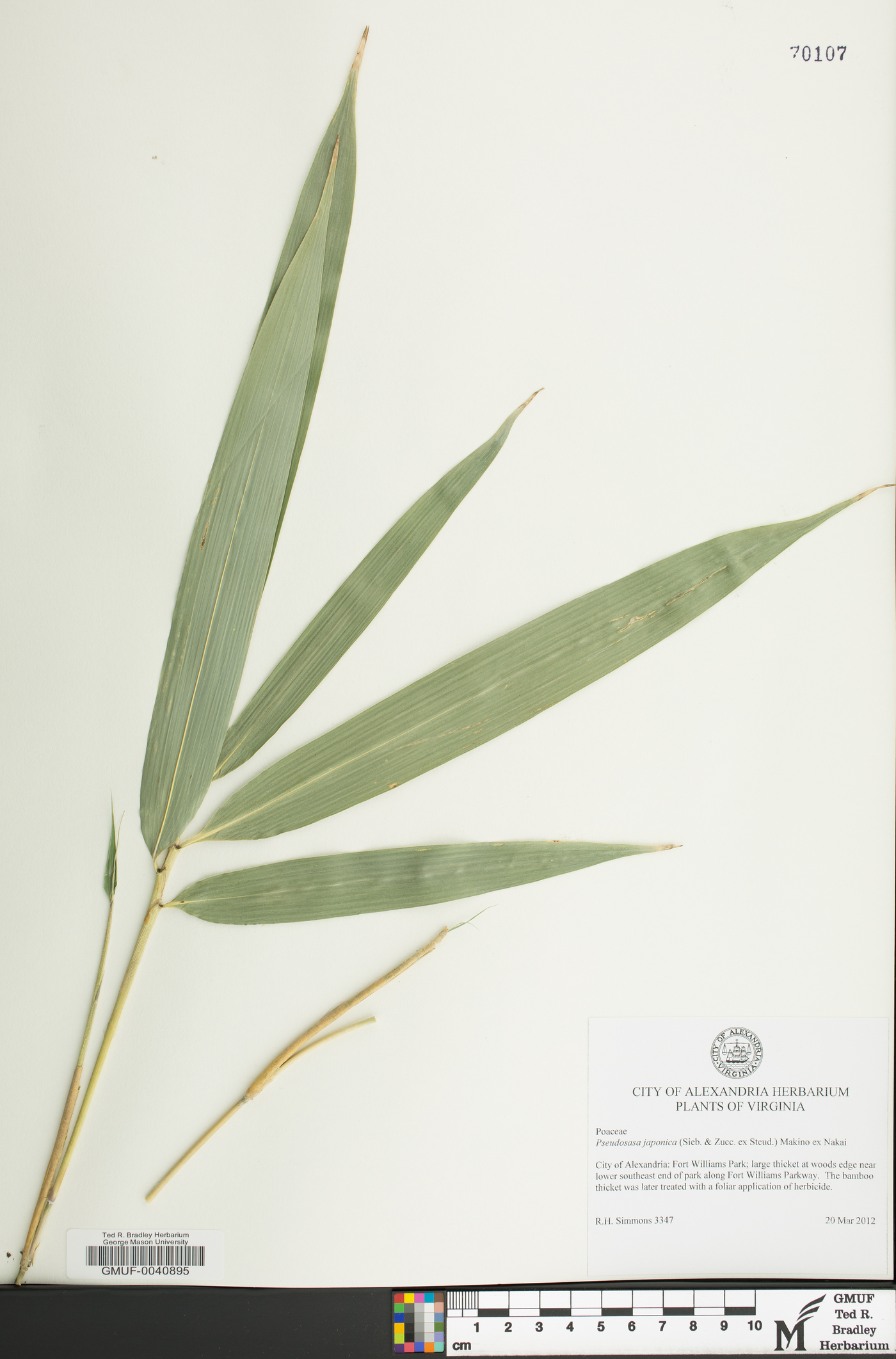Pseudosasa
|
Family: Poaceae |
Plants shrublike, spreading or loosely to densely clumped; rhizomes leptomorph. Culms 0.5-13 m tall, to 4 cm thick, self-supporting, erect
or nodding, pluricespitose; nodes
not or slightly swollen; supranodal
ridge not evident; internodes mainly terete, only slightly
flattened immediately above the branches, glabrous, with light wax below the nodes.
Branches initially 1-3, erect to
arcuate, often short, central branch dominant, with compressed basal nodes,
branches fully sheathed, lateral branches arising either from the basal nodes
or from more distal nodes, sheaths and prophylls more or less glabrous,
persistent, tough. Culm leaves
coriaceous and very persistent; blades
erect or reflexed, narrowly triangular to strap-shaped. Foliage leaves: sheaths
persistent; blades cross veined,
medium to large for the size of the culm, without marginal necrosis in winter, their arrangement random. Inflorescences racemose or paniculate; branches subtended by much reduced or
quite substantial bracts. Spikelets
2-20 cm, with 3-30 florets; rachillas
sinuous; disarticulation below the
florets. Glumes 2, shorter than the
first lemma; lemmas to 1 cm; anthers 3; styles 3; paleas 2-keeled.
Named for the similar, but 6-anthere genus Sasa,
in which it had been included. |

